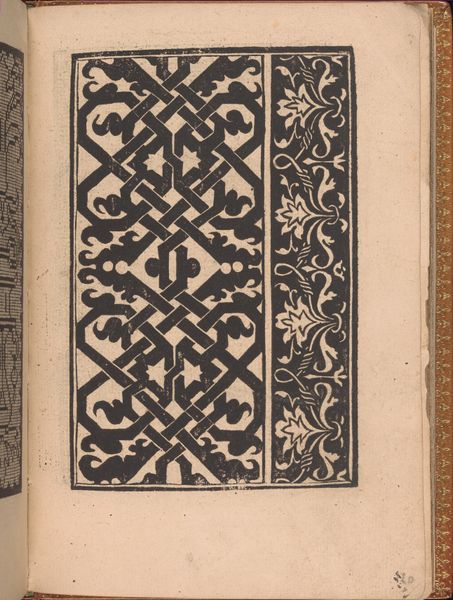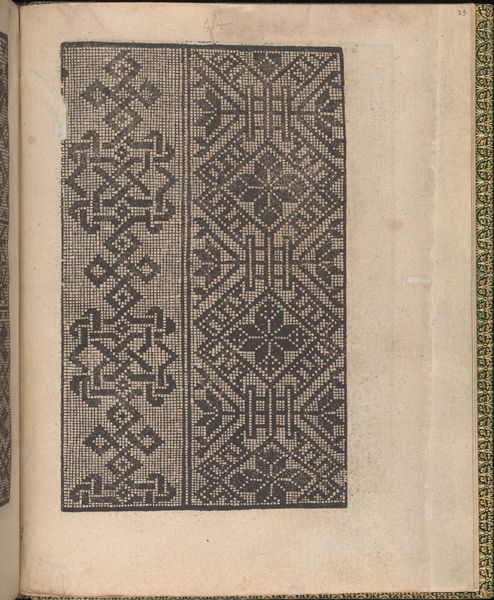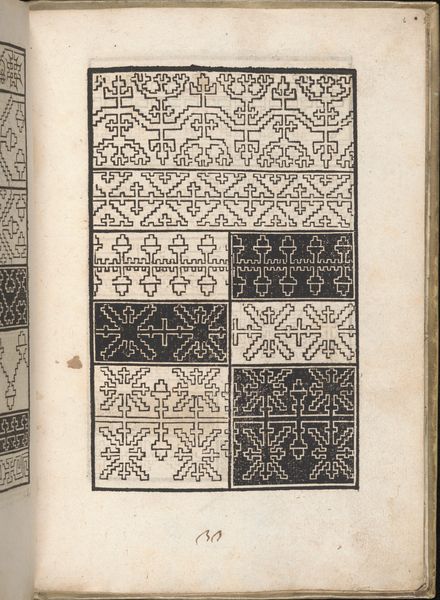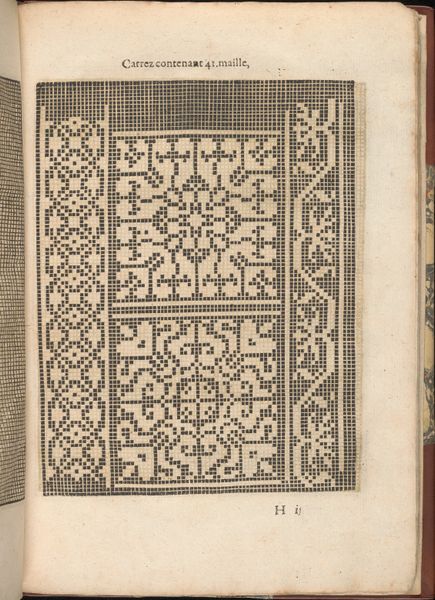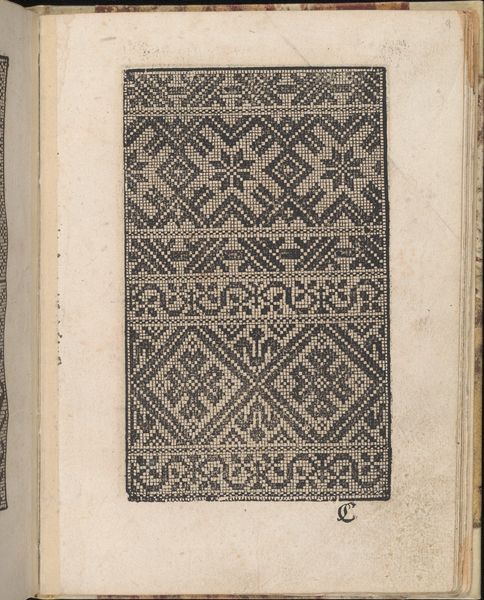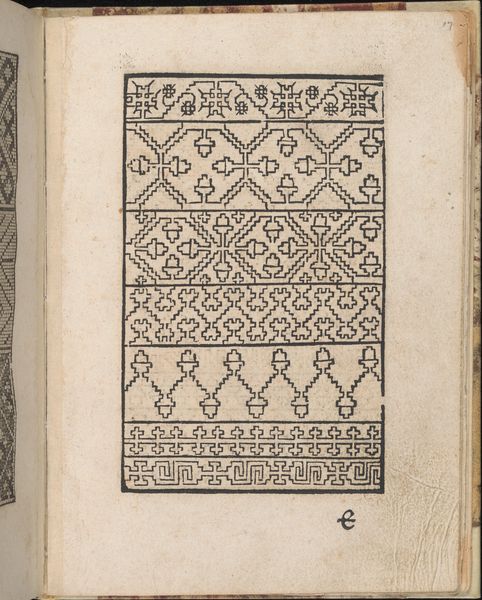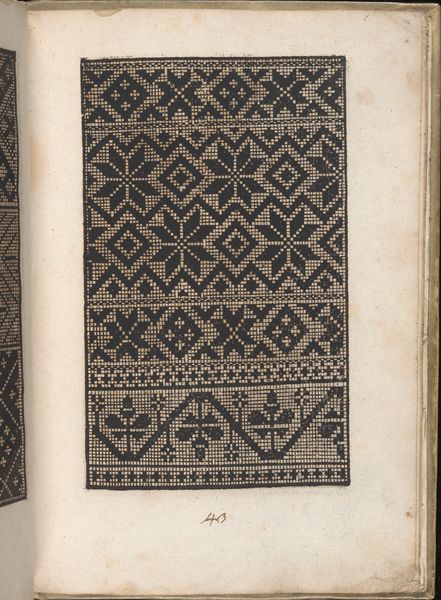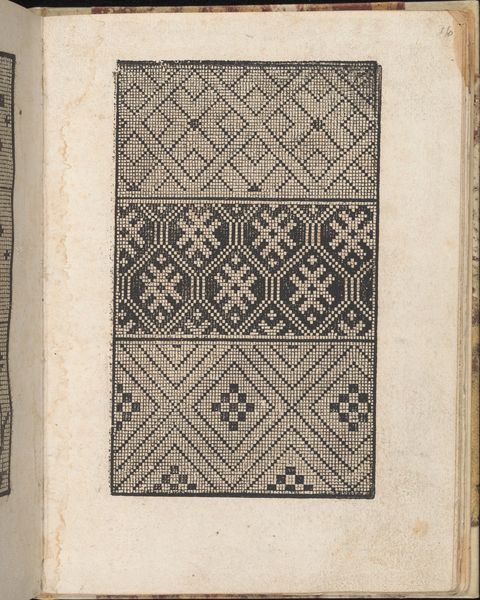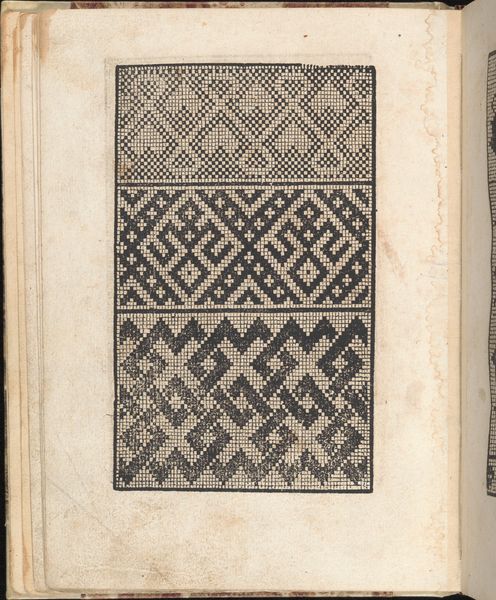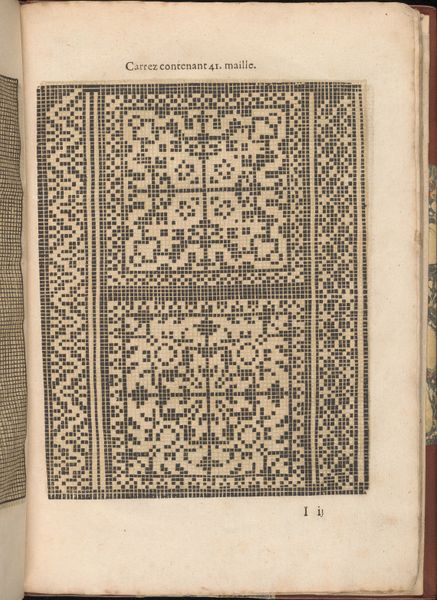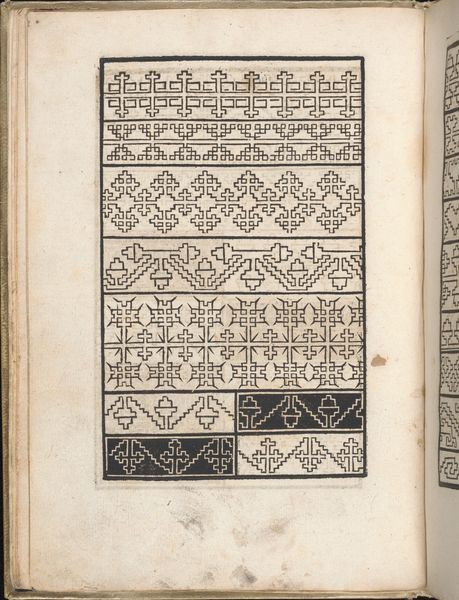
drawing, graphic-art, print, textile, woodcut
#
drawing
#
graphic-art
#
medieval
# print
#
textile
#
geometric
#
woodcut
Dimensions: Overall: 7 7/8 x 5 1/2 in. (20 x 14 cm)
Copyright: Public Domain
Curator: Look at the stark contrast and striking patterns! It's captivating. Editor: Indeed. What we're seeing here is a page from Peter Quentel's *Eyn new kunstlich boich*, from 1529, currently held at the Metropolitan Museum of Art. These geometric designs were created using a woodcut, a common technique for mass-producing images in the medieval era. Curator: It reminds me of traditional weaving. The almost pixelated patterns create a tension between the geometric forms and something more organic. It feels both rigid and fluid simultaneously. Could we speak about gendered aspects of creation, as weaving was often tied to women? Editor: That’s a sharp observation. While Quentel's design presents these geometric forms on paper, we must consider that it draws heavily from textile design, a craft deeply rooted in women's labor and domestic spaces. Curator: The book could be understood as a way for men to participate in weaving pattern creation. Editor: Precisely. And the mass production through woodcut is worth mentioning here. The act of reproducing these designs through print—transforming a traditionally handmade textile pattern into a commodity—highlights the shift towards a market-driven economy. Curator: Considering the book’s purpose was for artists and artisans, it suggests the audience may include women creating at home. We can't discount the possibility of women being active participants in both production and dissemination. Editor: Good point! The materials – wood and ink – alongside the labor-intensive process of carving the block would've been essential considerations for those artisans trying to implement these patterns. Curator: Thinking about intersecting identities adds another layer of appreciation. Race and class surely influenced one's access to creating and participating. Editor: Right. I’ve never considered it from a woman's point of view. Curator: Considering who has historically been erased, or written out of our telling of stories in this moment and space makes all the difference in creating and understanding these histories. Editor: Understanding how such works were produced offers tangible ways to engage with labor history. And by intersecting the historical perspective with modern sociological lenses, we have an enhanced understanding. Curator: I walk away recognizing that to do my job properly I can benefit from paying more attention to the materials, craft, and modes of production within a social context. Editor: And by considering how intersectional viewpoints reshape our understanding of art, the narratives around artwork shift, becoming so much richer and expansive.
Comments
No comments
Be the first to comment and join the conversation on the ultimate creative platform.

